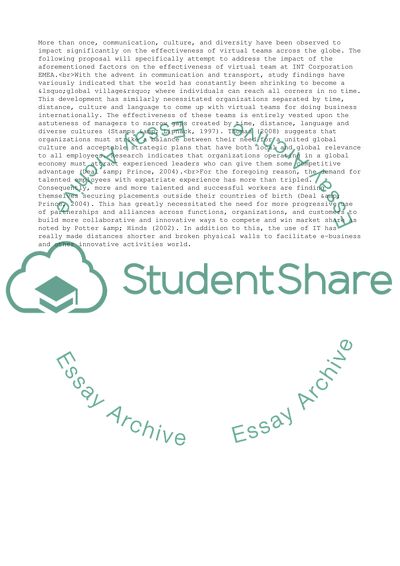Cite this document
(Impact of Communication, Culture and Diversity on Virtual Team Case Study, n.d.)
Impact of Communication, Culture and Diversity on Virtual Team Case Study. Retrieved from https://studentshare.org/management/1746349-what-is-the-impact-of-communication-culture-and-diversity-on-virtual-team-effectiveness-at-int-corporation-emea
Impact of Communication, Culture and Diversity on Virtual Team Case Study. Retrieved from https://studentshare.org/management/1746349-what-is-the-impact-of-communication-culture-and-diversity-on-virtual-team-effectiveness-at-int-corporation-emea
(Impact of Communication, Culture and Diversity on Virtual Team Case Study)
Impact of Communication, Culture and Diversity on Virtual Team Case Study. https://studentshare.org/management/1746349-what-is-the-impact-of-communication-culture-and-diversity-on-virtual-team-effectiveness-at-int-corporation-emea.
Impact of Communication, Culture and Diversity on Virtual Team Case Study. https://studentshare.org/management/1746349-what-is-the-impact-of-communication-culture-and-diversity-on-virtual-team-effectiveness-at-int-corporation-emea.
“Impact of Communication, Culture and Diversity on Virtual Team Case Study”, n.d. https://studentshare.org/management/1746349-what-is-the-impact-of-communication-culture-and-diversity-on-virtual-team-effectiveness-at-int-corporation-emea.


